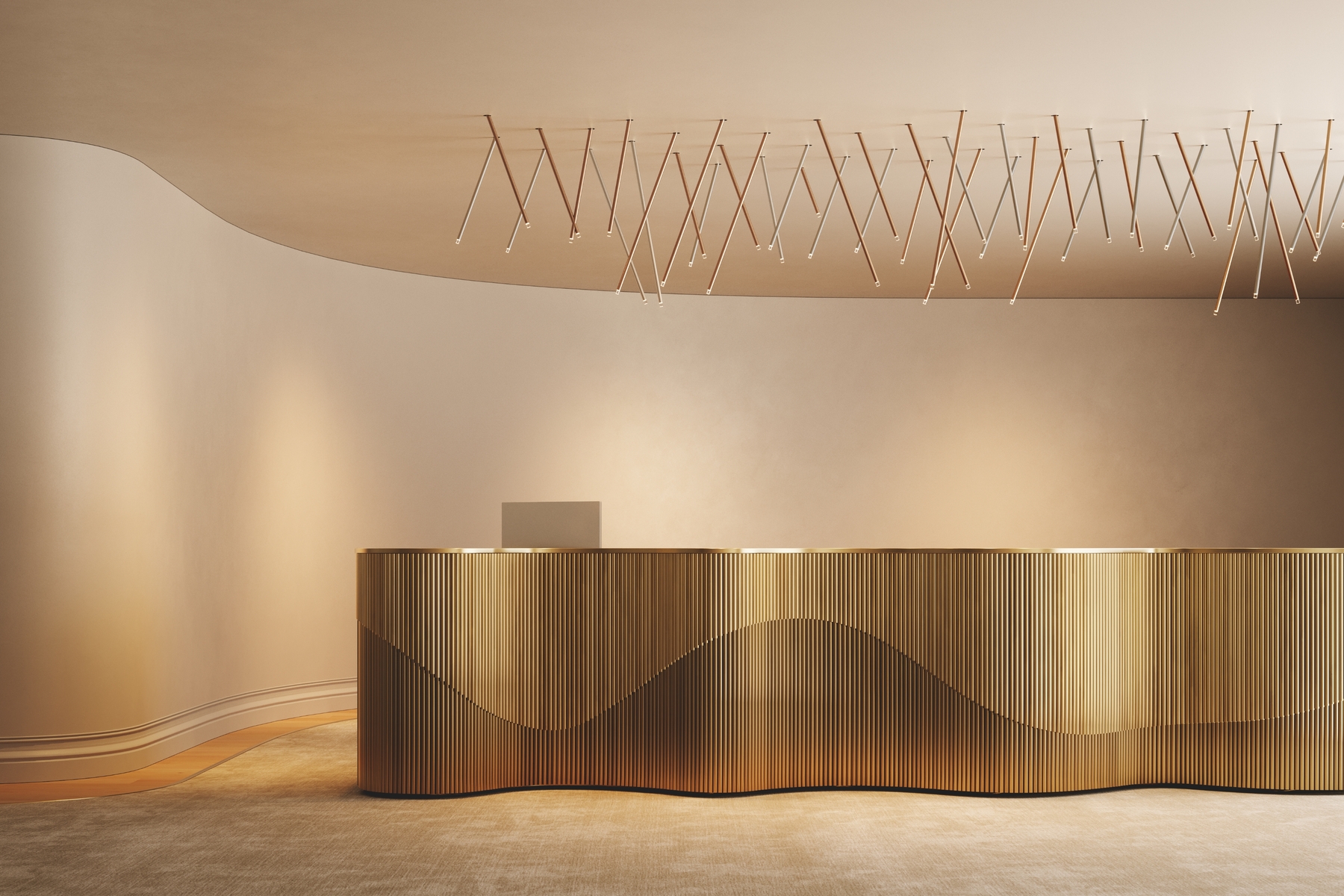Hidden within the heart of an unassuming office wing lies a gem, a sanctuary of mixology and ambiance known simply as Temple. This speakeasy in Astana, the capital of Kazakhstan, steeped in history and brimming with character, offers an unparalleled experience to those fortunate enough to discover its secrets. As you step through its unmarked door, you’re transported into a world where every detail whispers of craftsmanship and intentionality.
Temple is a culmination of dreams and aspirations, crafted by its founders and brought to life by the visionary minds at Kvadrat Architects Studio. From its inception, Temple was envisioned as more than just a place to sip cocktails; it was meant to be an immersive journey—a space where every patron, or “parishioner” as they are affectionately called, could lose themselves in the magic of the moment.

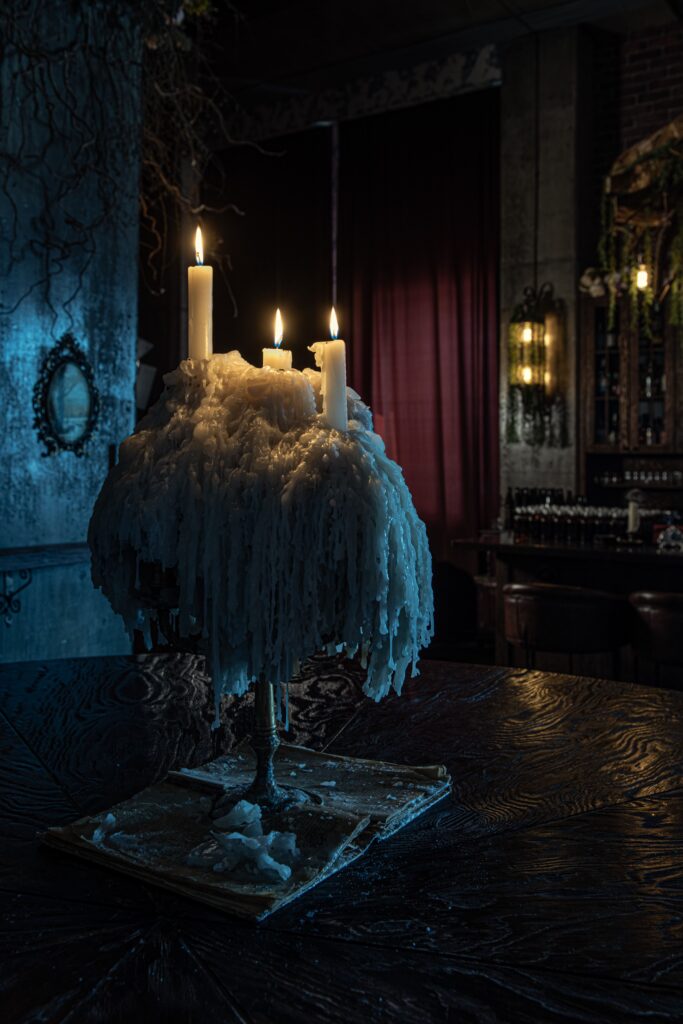
The architects behind Temple, Sergey Bekmukhanbetov and Rustam Minnekhanov, approached the project with a deep understanding of the emotions and sensations they sought to evoke. At the heart of Temple lies its cocktail lab, a haven for experimentation and innovation. Here, mixologists craft bespoke drinks tailored to each patron’s preferences, eschewing traditional menus in favor of personalized experiences. Temple’s dedication to the art of mixology is evident in every sip, as flavors and aromas intertwine to create a symphony for the senses.
The design ethos of Temple is one of authenticity and reverence for the past. Rather than attempting to mimic the aesthetics of a bygone era, the architects chose to uncover the raw beauty of the space, exposing concrete walls and structural columns that bear the marks of time. Flea market treasures from around the world adorn the interior, each piece imbued with its own story and significance.
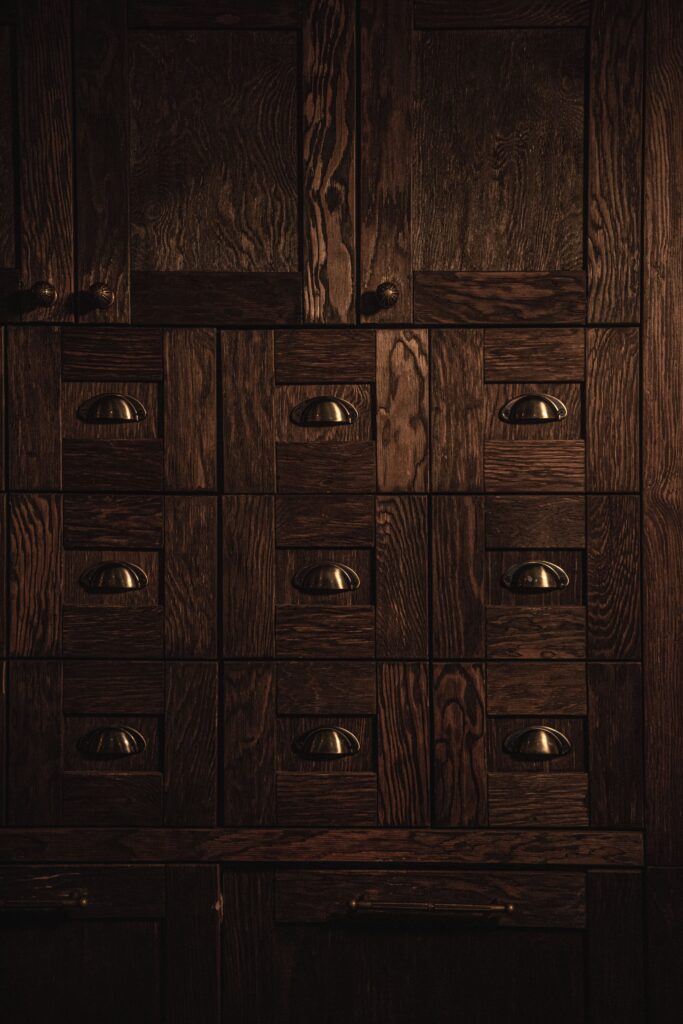

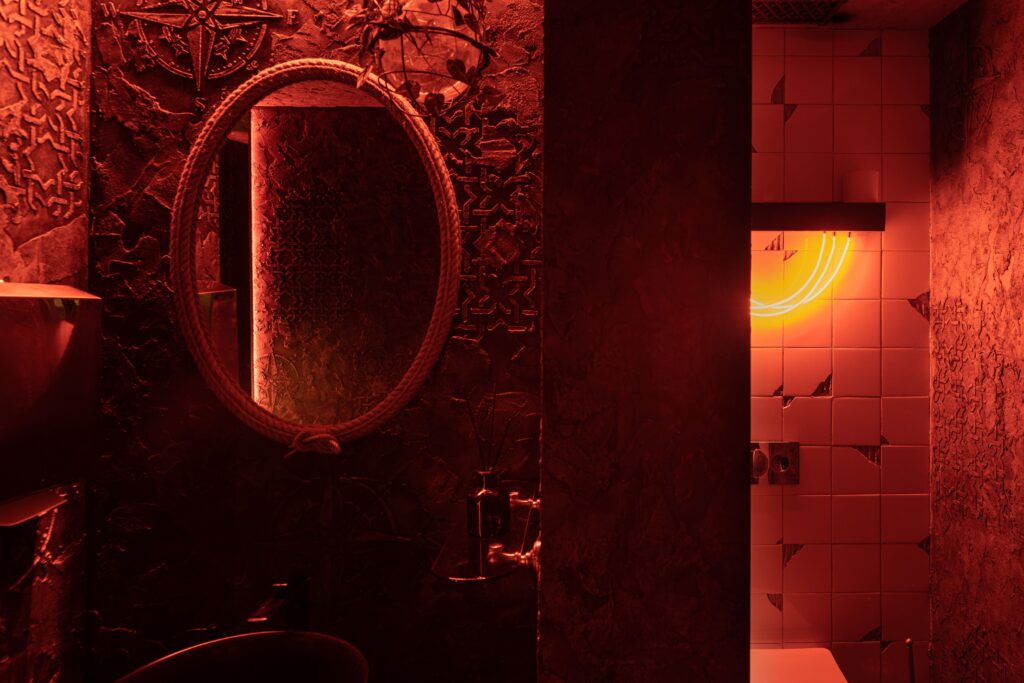
Light plays a pivotal role in shaping the atmosphere of Temple, casting shadows that dance across the room and enveloping patrons in a sense of intimacy and mystery. Zoning is achieved not through physical barriers, but through the subtle interplay of light and shadow, guiding guests on a journey of exploration and discovery. Every element of Temple’s decor has been carefully curated, from vintage bronze frames sourced from Georgian markets to expressive Chippendale-style chairs salvaged from the estates of Almaty. Even the furniture itself tells a story, aging gracefully over time and bearing the marks of its journey.
“As architects and designers, we have prepared a canvas on which life itself will apply artistic dabs. We set a vector in which way to select furniture and decor items. And the space continues changing and acquire of meanings, gets its character,”
Sergey Bekmukhanbetov and Rustam Minnekhanov
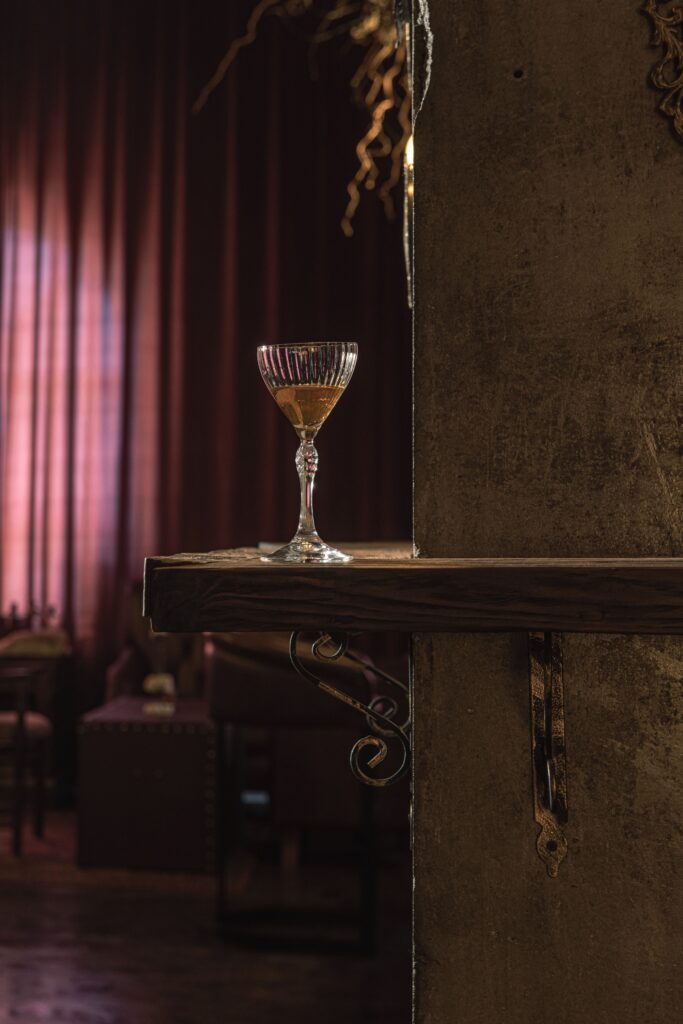
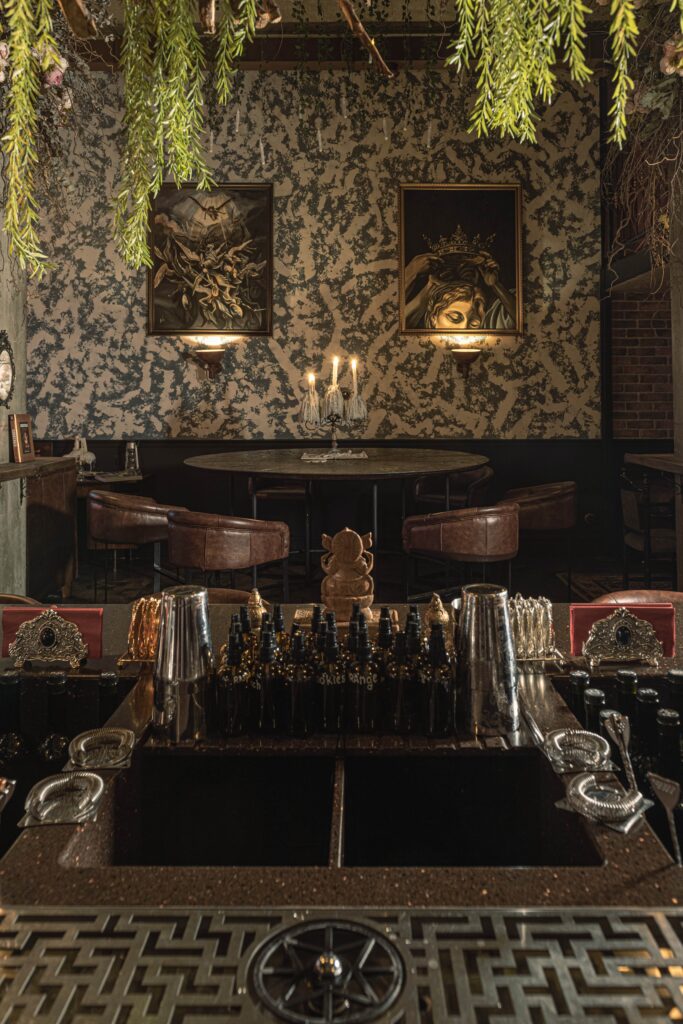
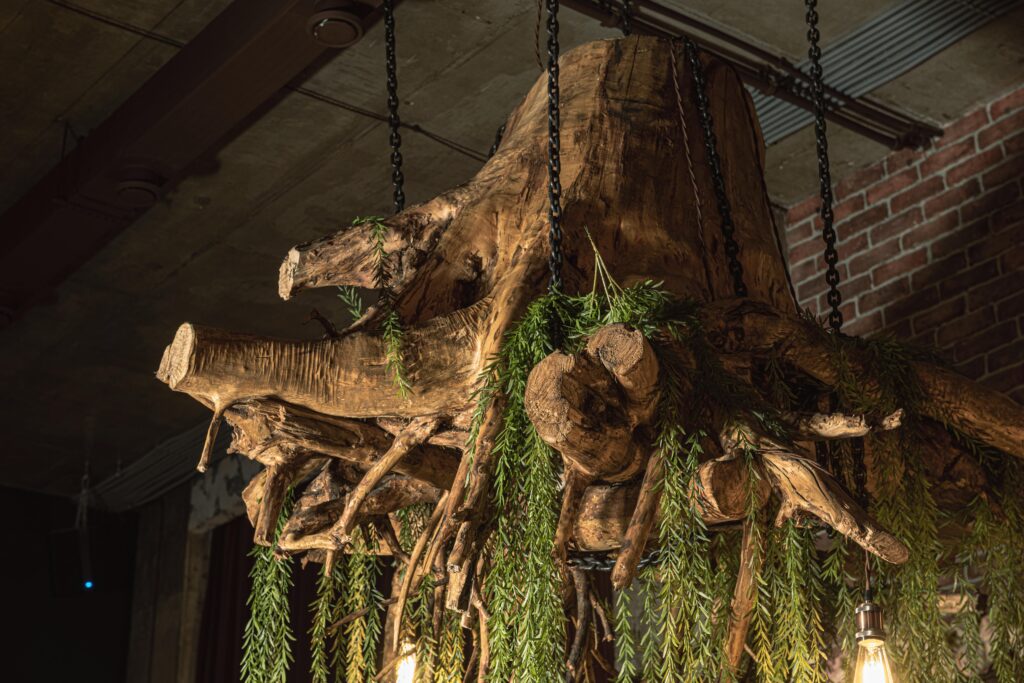
Central to Temple’s design is the bar counter, adorned with a 150-year-old tree root that serves as a metaphorical centerpiece. This humble yet majestic relic, sourced from the founders’ hometown of Petropavlovsk, serves as a poignant reminder of the passage of time and the importance of honoring one’s roots.
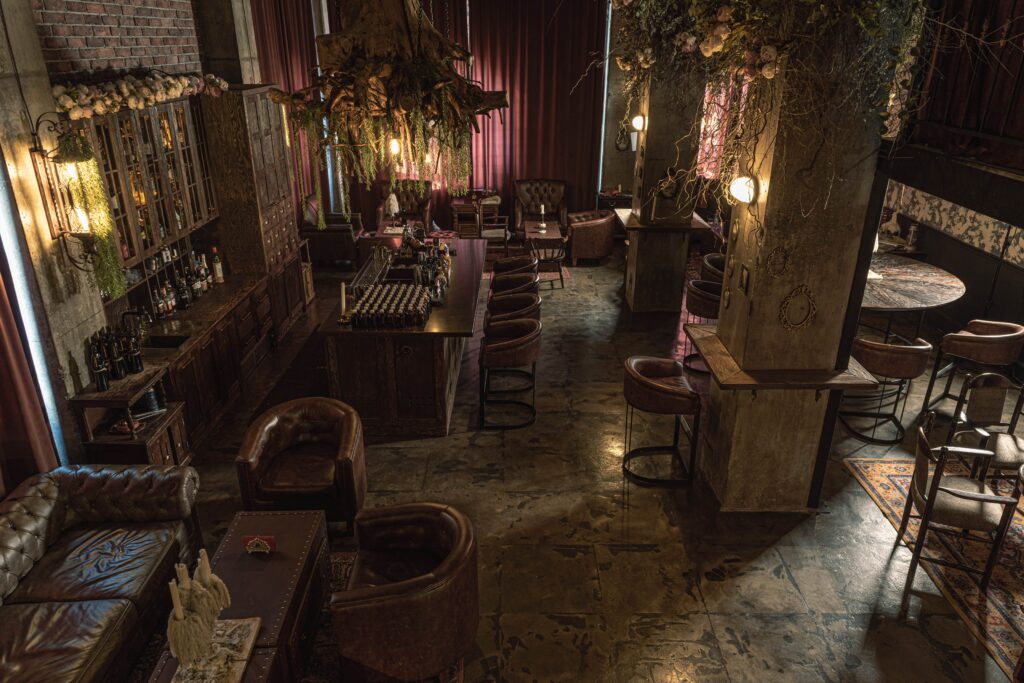
In crafting Temple, the team at Kvadrat Architects set out to create more than just a bar; they sought to craft a space of significance—a place where patrons could connect with their past, present, and future. In the hushed confines of this unique bar, amidst the flickering candlelight and the scent of aged wood, visitors find themselves transported to a world where time stands still, and every moment is imbued with meaning. Here, in this hidden oasis, they discover not just a bar, but a sanctuary—a place to nourish the soul and awaken the senses.





